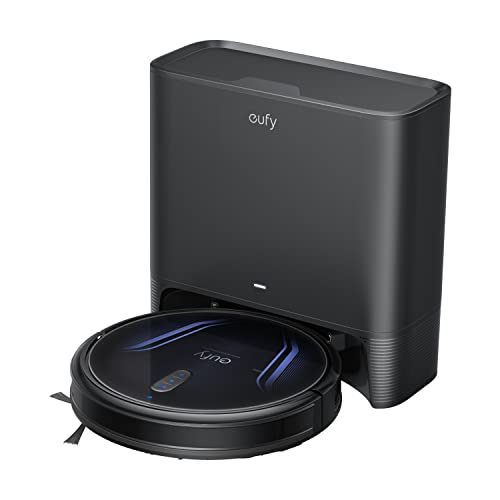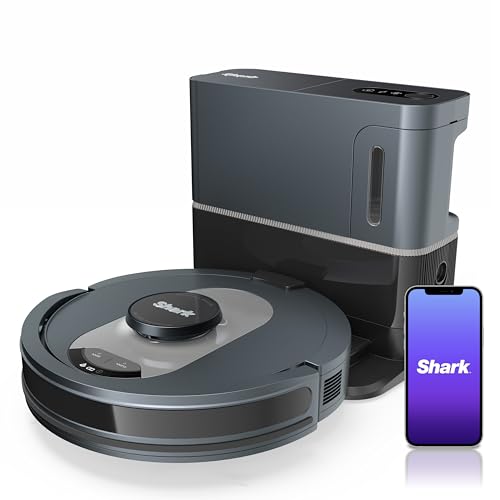5 Killer Quora Answers On Bagless Robot Vacuums
페이지 정보
작성자 Anja Kingsley 작성일 24-09-02 17:32 조회 132 댓글 0본문
 bagless automated sweepers Robot vacuum [http://chunzee.co.kr/] Robot Vacuums
bagless automated sweepers Robot vacuum [http://chunzee.co.kr/] Robot Vacuums Robot vacuums are costly and are not a replacement for the regular vacuum. It's easy for them become caught in power cords or make a mess of pet hair. It's a good idea to clear the floor clutter prior to each cleaning session.
Robot vacuums are costly and are not a replacement for the regular vacuum. It's easy for them become caught in power cords or make a mess of pet hair. It's a good idea to clear the floor clutter prior to each cleaning session.Also, most robots are quite noisy when they self-empty. The process can last for up to a minute and can be a bit jarring for pets and children.
Cost
A robot vacuum is expensive to purchase however it can save you a lot of time and money. It works with all types of flooring, including carpets made of wood and low-pile. It's not able to handle heavy debris or areas with a lot of staining, so it is best to have an ordinary vacuum at hand. However, it can easily clean the corners, the nooks and crannies the regular vacuum cannot reach.
The best model for you will depend on the size of your home and the frequency you intend to use it. A bigger house will require a more powerful robot with a bigger dust bin, whereas smaller homes can get by with a lighter model that has a smaller bin. Some models even offer self-emptying which can cut down on the cleaning chores you have to do.
Certain models with higher end features use cliff sensors and optical encoders to keep them from falling down staircases or hitting other obstacles however these features can increase the overall cost of the robot. Smart mapping will help your robot understand your home's layout and clean certain rooms or areas with the click of an button. No-go zones permit you to create magnetic boundary strips around areas that you don't want the robot to access, such as your children's bedrooms.
Battery life is a factor to consider. If you plan on using your robot regularly, you should choose a model that has a long-lasting battery. Certain robots have bases that automatically recharge and resumes where they left on. This means that you do not have to empty the dustbin after each use.
Before purchasing a bagless robot vacuum and mop robotic vacuum, make sure you check the warranty. Many manufacturers offer only a one- or two-year warranty on their products. This means that you won't be covered if your machine fails to function properly. The good news is that Australian Consumer Law protects you from paying more than the manufacturer's suggested retail price for an item that doesn't work as expected.
Capacity
A robot vacuum's capacity is a major determinant of how long it will last between emptying. It's important to assess your needs for cleaning and select the model that has an ample dust bin to prevent frequent interruptions. This is especially crucial if you have children or pets. It's also recommended to visit the manufacturer's website for maintenance and cleaning tips specific to your model. This includes getting rid of hair that is tangled around the brushes and emptying (and cleaning according to the manual, if it recommends it) the dust bin after each use. You should also wipe the cameras and sensors to ensure they're functioning properly.
Robots differ greatly in terms of their capacity. Some models come with a tiny dustbin that holds up to two cups of dust. This is sufficient to keep the house tidy between regular cleaning, but not as much as a large upright or stick vacuum. Robots generally have less suction power than traditional vacuum cleaners, however, they can remove the majority of fine particles and lighter debris.
Another factor to consider is the ability of robots to overcome obstacles such as furniture or pet hair. While most models feature sensors to identify and avoid obstacles, they're not completely safe. If you have a large dog or cat for instance an ordinary robot vacuum will likely be engulfed in its fur and not be able to clean your floors thoroughly. In these cases you'll need to purchase a more expensive model that is better at managing the mess.
Some robots can also be enhanced with advanced features, like mopping capabilities and AI image recognition to provide elite obstacle avoidance. These upgrades can be expensive but are worth it for people who spend a lot of time at home.
Ultimately, no robot can substitute for a full-size vacuum and many users prefer having one on standby for larger debris or huge piles of mess. Most robotic vacuums aren't powerful enough to handle dirt from stairs or ground-in dirt and their scores for picking up on carpets with low pile and hard floors aren't up to scratch. This means you'll need to pull out the broom and sweeper to tackle bigger cleaning tasks.
Noise
While many consumers love the convenience of a robotic vacuum cleaner, others are disappointed by the noise level to be unsettlingly high. The sound level of robot vacuums is determined by many factors, including the size, power, design, and type. Some models, such as those that have brushless motors perform more quietly than counterparts that have brushed motors. Manufacturers also employ soundproofing materials to reduce the noise of the machine.
Fortunately, the sound level of robot vacuums is increasing with time. The latest models have advanced navigation and obstruction detection systems that allow for smooth and easy movement around your home and reduce bumps and jarring sound. This technology lets the device to map your home's layout and determine how to best navigate around furniture and other obstructions.
Some of the best robotic vacuums also have integrated mop heads that clean your floors. Contrary to traditional vacuums that rely on static suction, these new devices can pulverize water, detergent, and other substances. In addition, they can adjust the pressure of their mop according to the type of floor, applying less or more pressure to tile and hardwood floors, respectively. The DEEBOT X2 OMNI uses 8,000Pa power to clean your floors.
However, while the noise level of robot vacuums is increasing, the majority of models aren't as quiet as manual vacuums. This is particularly true when they are used on carpets with a lot of fibers, since the robotic vacuums can get overwhelmed and are unable to move. It is important to have a traditional vacuum on hand for cleaning heavy.
In the end, the accumulation of debris within a robot vacuum can result in loud or strange noises. For instance, long hair or other small objects could tangle within the wheels or brushes, which causes the machine to work harder and make a racket. The components can be cleaned or replaced to make the device run more quietly. Regular maintenance and troubleshooting will ensure your smart cleaner runs effortlessly and quietly.
Maintenance
Robot vacuums can be a useful method of cleaning without using your hands. However, they're not a complete replacement for a fully-sized manual vac. Like any piece of equipment, they require regular maintenance to perform at their best.
The majority of robot vacuums come with a docking station that lets them recharge and begin an entire cleaning session if required. Many robot bagless automated vacuums come with a dustbin or bag that is easy to clean, clean and empty. After each use, you should check the brush and bin rolls for hairs, lint, or other debris. Also, wash the main brush often with warm water and mild detergent. Be sure to let it dry completely prior to returning it to the robot.
Many robot vacuums are equipped with sensors that enable them to navigate around obstacles, like walls or furniture. Some are more advanced and can even map your home with cameras or lasers and determine the most efficient route to the rooms. However, even the most advanced robot vacuums aren't foolproof; they can still run into things they shouldn't, and get bogged down in super-thick shag carpet fibers.
The most significant maintenance issue with most robots is that their lithium ion batteries have to be replaced after a certain period of time. According to CHOICE’s 2020 consumer survey on reliability, battery issues were the most frequently reported reliability issues by robot vacuum owners. Most models will have to be replaced within four years after purchase.
If you utilize robots for cleaning tasks, a weekly maintenance routine is all that's needed to keep it in good condition. After each use, you'll want to keep the wheels free of any threads or pet hair that might have been wrapped around them. You can also wipe the bottom of the machine with a damp rag. This will help keep the wheels running smoothly and prevent unnecessary strain on the motor.
You should also check the charging port for blockages at minimum once every week. You should also clean the rollers and brushes each month using warm water and mild detergent. Brushes and rollers as well as other accessories for robots in department stores and hardware stores. There are many available on the internet.
댓글목록 0
등록된 댓글이 없습니다.
